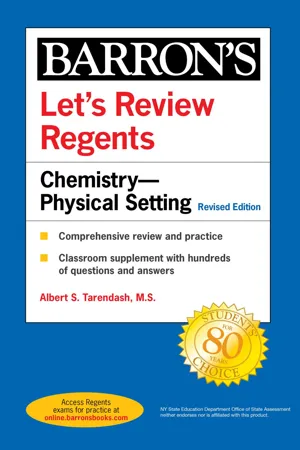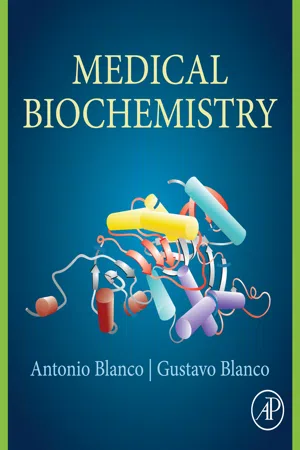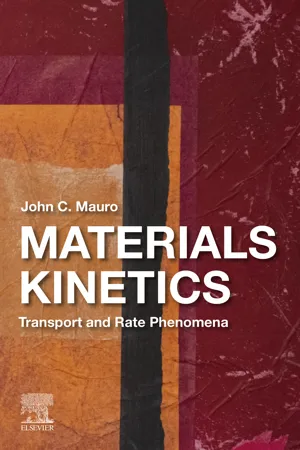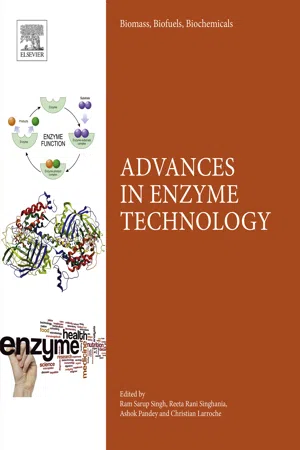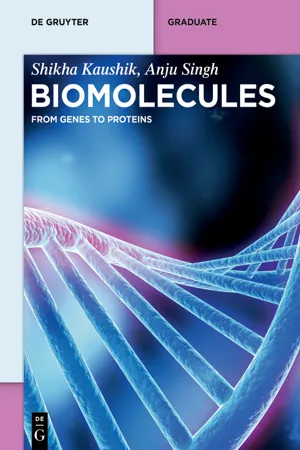Chemistry
Energetics
Energetics in chemistry refers to the study of energy changes that occur during chemical reactions and physical transformations. It involves the analysis of energy transfer, storage, and utilization within chemical systems. Energetics provides insights into the thermodynamic properties of substances and the factors influencing their reactivity and stability.
Written by Perlego with AI-assistance
Related key terms
Related key terms
1 of 4
Related key terms
1 of 3
6 Key excerpts on "Energetics"
- Albert S. Tarendash(Author)
- 2021(Publication Date)
- Barrons Educational Services(Publisher)
Chapter FiveEnergy and chemical reactions
Key Ideas
This chapter focuses on the role energy plays in chemical reactions and the factors that determine whether a chemical process will occur under a given set of conditions.KEY OBJECTIVES
At the conclusion of this chapter you will be able to:- Define the terms system and surroundings as they relate to chemical processes.
- Define the terms internal energy and heat.
- Distinguish between heat and temperature.
- Distinguish between exothermic and endothermic reactions.
- Define the term specific heat, and use specific heats to solve calorimetry problems.
- Relate the first law of thermodynamics to the law of conservation of energy.
- Define the term heat of reaction, and solve problems involving heats of reaction.
- Define the terms standard heat of formation and formation reaction, and use the appropriate reference tables to solve problems related to the standard heat of formation.
- Interpret a potential energy diagram.
- Define the term activation energy.
- Define the term spontaneous reaction, and name and describe the factors that drive spontaneous reactions.
- Define the term entropy, and predict whether a given reaction leads to an increase or a decrease in entropy.
Passage contains an image
SECTION I—BASIC (REGENTS-LEVEL) MATERIAL
NYS REGENTS CONCEPTS AND SKILLS
Note: By the time you have finished Section I, you should have mastered the concepts and skills listed below. The Regents chemistry examination will test your knowledge of these items and your ability to apply them.Concepts are the basic ideas that form the body of the Regents chemistry course (what you need to know!).Skills are the activities that demonstrate your mastery of these concepts (how you show that you know them!).Following each concept or skill is a page reference (given in parentheses) to this chapter.5.1 Concepts: - Heat is a transfer of energy (usually thermal energy) from a body of higher temperature to a body of lower temperature. (Page 112
- eBook - ePub
- Antonio Blanco, Gustavo Blanco(Authors)
- 2017(Publication Date)
- Academic Press(Publisher)
energy . Chemical transformations are accompanied by energy changes. Understanding these changes is important in biochemistry since it helps to recognize how metabolic processes proceed.Thermodynamics is the branch of physics that deals with energy and its transformations. Its basic principles are applicable to biological processes. The fundamental principles of thermodynamics are expressed in the following two laws:First law of thermodynamics: The total energy of the universe remains constant (all forms of energy are exchangeable; the energy is neither created nor destroyed).Second law of thermodynamics: The entropy of the universe increases constantly (entropy is associated with disorder or randomness).Energy
Commonly, energy is defined as the capacity to produce work. Energy exists in different modes: chemical, thermal, mechanical, electrical, and radiant, all of which can be converted into each other. Energy conversions occur frequently in biological processes. The development and growth of an organism and the continuous renewal of its structures involves a large number of chemical reactions, which are only possible if there is energy input. Similarly, maintenance of body temperature in warm-blooded animals; mechanical work in muscles, cilia, and flagella; generation of electrical impulses in the nervous system; and active transport of substances across membranes are all processes that demand energy.The primary source of energy for all forms of life is solar radiation. This is captured and stored as chemical energy by photosynthetic organisms and transferred to other living beings through the feeding chain of biosphere. In aerobic organisms, energy is generated mainly by oxidation of substances incorporated with the food and transferred to compounds that retain it to be used when necessary.Chemical energy plays an important role in biological processes. The chemical energy of a compound is represented by the movement and relative position of its atoms and particles and by bonds and attractions between its elements. When a chemical reaction occurs, frequently bonds are broken or formed and the energy content of the molecules changes. The course of a chemical reaction is ultimately determined by the energy content of the system under consideration and the energy exchange between it and the environment. - eBook - ePub
Materials Kinetics
Transport and Rate Phenomena
- John C. Mauro(Author)
- 2020(Publication Date)
- Elsevier(Publisher)
Chapter 1: Thermodynamics vs. Kinetics
Abstract
Thermodynamics concerns the relative stability of the various states of a system, whereas kinetics concerns the approach to equilibrium and the intermediate states visited along the way. Thermodynamic processes are spontaneous if they result in a decrease in the Gibbs free energy of the system. The change in Gibbs free energy has both enthalpic and entropic contributions. However, the spontaneity of a process says nothing about the rate of its kinetics. As proposed by Boltzmann, entropy is a measure of the number of microstates visited by a system to produce a specific macrostate. Justification of both the second and third laws of thermodynamics can be made in terms of the underlying statistical mechanics of the system and Boltzmann's equation for entropy.Keywords
Thermodynamics; Kinetics; Free Energy; Enthalpy; Entropy; Statistical Mechanics1.1. What is Equilibrium?
The field of classical thermodynamics is primarily concerned with equilibrium states, i.e., the states to which systems will eventually evolve and become stable. Although the concept of equilibrium is seemingly intuitive, this simplicity can be deceptive. Perhaps the most insightful definition of equilibrium is given by Richard Feynman [1 ], who said that equilibrium is “when all the fast things have happened but the slow things have not.”“Surely you're joking, Mr. Feynman!” we may be tempted to reply. While Feynman's definition may seem somewhat flippant at first, it incisively captures the importance of time scale in determining what constitutes equilibrium.Perhaps we should rephrase our response to Mr. Feynman. If equilibrium is “when all the fast things have happened but the slow things have not,” this begs the questions, “What is fast?” and “What is slow?” Indeed, “fast” and “slow” are intrinsically relative terms and depend on your perspective as an observer [2 - eBook - ePub
Biomass, Biofuels, Biochemicals
Advances in Enzyme Technology
- Ram Sarup Singh, Reeta Rani Singhania, Ashok Pandey, Christian Larroche(Authors)
- 2019(Publication Date)
- Elsevier(Publisher)
thermo-dynamics ), with the aim of improving the performance of steam engines. However, the initial applicability of thermodynamics to engineering was extended early on to the study of chemical reactions. Through time, thermodynamics has evolved into a theory that describes the transformation of states of matter and the energy changes involved (motion generated by heat being only a consequence of certain transformations). Thus, thermodynamics has provided deep insights, and found utility in almost every single scientific field, and of course in biochemistry.Living beings, by means of metabolism, transform matter and convert energy from one form to another as we carry out the business of life. Thus, it should come without surprise that thermodynamics has proved to be extremely useful in biology, providing insights at all levels of organization of living matter. Indeed, when one addresses a thermodynamic study, the very first thing to be done is to define the part of the world in which we have a special interest. The set of matter we are interested in studying is referred to as the “system.” Thus, the system can be an entire ecosystem (ecology), a whole animal or plant (physiology), a single cell (cell biology), an isolated organelle such as a mitochondrion or chloroplast (bioEnergetics), a set of metabolites and enzymes interconnected through reactions delimiting a metabolic pathway (systems biology), or the set of reactants and products of an isolated single metabolic reaction (biochemistry).The last two examples of biological systems are within the scope of this chapter. Therefore, we will address both types of systems herein. At this point, it is important to appreciate that because thermodynamics is founded on fundamental laws of universal applicability, the so-called fundamental equations derived from these principles are equally valid for any system we may be interested in, regardless of its size or complexity. However, the way to approach the study and the sort of insights we pursue varies from one discipline to another, even when the thermodynamic fundamentals used as tools are the same. In this chapter we will pay attention to both facets: the universal principle of thermodynamics, and the particular features of biochemical systems. First, we will introduce basic concepts from both classical thermodynamics, as well as nonequilibrium thermodynamics, that we should consider when addressing any thermodynamic study related to biochemical systems. Subsequently, we will point out those particular aspects that should be considered when a chemical reaction is taking place within the system. Afterward, enzyme-mediated catalysis will be presented from a thermodynamic point of view. Finally, we will develop concrete examples that illustrate how the use of thermodynamic elements allows a better and deeper understanding of the structure, performance, and evolution of metabolic pathways. - eBook - ePub
Chemistry
With Inorganic Qualitative Analysis
- Therald Moeller(Author)
- 2012(Publication Date)
- Academic Press(Publisher)
G to equilibrium and electrochemistry is then discussed. Thermodynamic calculations of heats of reactions, equilibrium conditions, phase changes, and rates of reaction at temperatures other than 25°C are demonstrated. The last section applies thermodynamics to a biochemical reaction.t hermodynamics (from the Greek “therme” meaning heat or energy, and “dynamis” meaning power ) is the study of the transformation of energy from any one form to another. A complete study of thermodynamics involves such topics as heat, work, changes in state, and chemical energy .When applied to chemical systems, thermodynamics serves as a valuable tool in predicting such things as the spontaneity of a chemical reaction, the relationship between the amounts of products and reactants once equilibrium has been established, and the amount of energy absorbed or released during a reaction. However, thermodynamics cannot predict the reaction mechanism nor the reaction rate—these are in the realm of chemical kinetics, which has been explored inChapter 15 .In Chapter 5we discussed thermochemistry, the branch of thermodynamics that deals with heat in chemical reactions and with ΔH, the change in enthalpy, or heat content, of substances. At this point you may be wondering what more there is to be learned about thermodynamics. FromChapter 5 you know that exothermic reactions can be spontaneous and endothermic reactions are not likely to be spontaneous. Isn’t this enough? As you can probably guess, the answer is no. If you go back to Section 5.3 ,you will see that there we emphasized the words “often” and “usually” in talking about reaction spontaneity. In this chapter we investigate all of the thermodynamic forces and explain why some changes with positive ΔH are spontaneous, while some changes with negative ΔH are not spontaneous - eBook - ePub
Biomolecules
From Genes to Proteins
- Shikha Kaushik, Anju Singh(Authors)
- 2023(Publication Date)
- De Gruyter(Publisher)
Chapter 4 Concept of Energy in BiosystemsThe highly structured and organized nature of living systems is perceptible and astonishing. Growth, development, and metabolism are some of the fundamental processes that occur in living organisms, and the role of energy is fundamental to all these biological processes. The survival of any living organism depends on energy transformations, that is, the exchange of energy within and without a particular system. The fundamental matter in bioEnergetics, that is, the study of energy relationships and conversions in living organisms, signifies the way by which energy from fuel metabolism or by capturing light is coupled to the energy-requiring reactions occurring in the cell. Muscular contraction, synthetic reactions, and active transport are some of the important processes that get energy when linked or coupled with some energy-releasing reactions (exergonic reactions). In all organisms (autotrophic and heterotrophic), ATP (adenosine triphosphate) plays an important role in transferring energy from the exergonic to the endergonic reactions. ATP is called a high-energy phosphate compound and is produced by living organisms via oxidative phosphorylation. The terminal phosphate linkage in ATP is relatively weak; when broken, it yields adenosine monophosphate (AMP) and inorganic phosphate and releases a large amount of energy. An organism’s stockpile of ATP is used by the cells to perform different activities to sustain life, and energy released from rearrangement of bonds within molecules is utilized to power all biological processes in every organism.BioEnergetics or biochemical thermodynamics deals with the transformations, exchange, requirements, and processing of energy within living systems. It also focuses on how cells transfer energy. Some of the essential biological processes such as biosynthesis of nucleic acids and other biomolecules are not thermodynamically favored under provided conditions, as they require an input of energy. They can proceed if coupled with energy-releasing processes. So, it endows with the answer why some reactions may occur while others do not.
Index pages curate the most relevant extracts from our library of academic textbooks. They’ve been created using an in-house natural language model (NLM), each adding context and meaning to key research topics.
Explore more topic indexes
Explore more topic indexes
1 of 6
Explore more topic indexes
1 of 4
